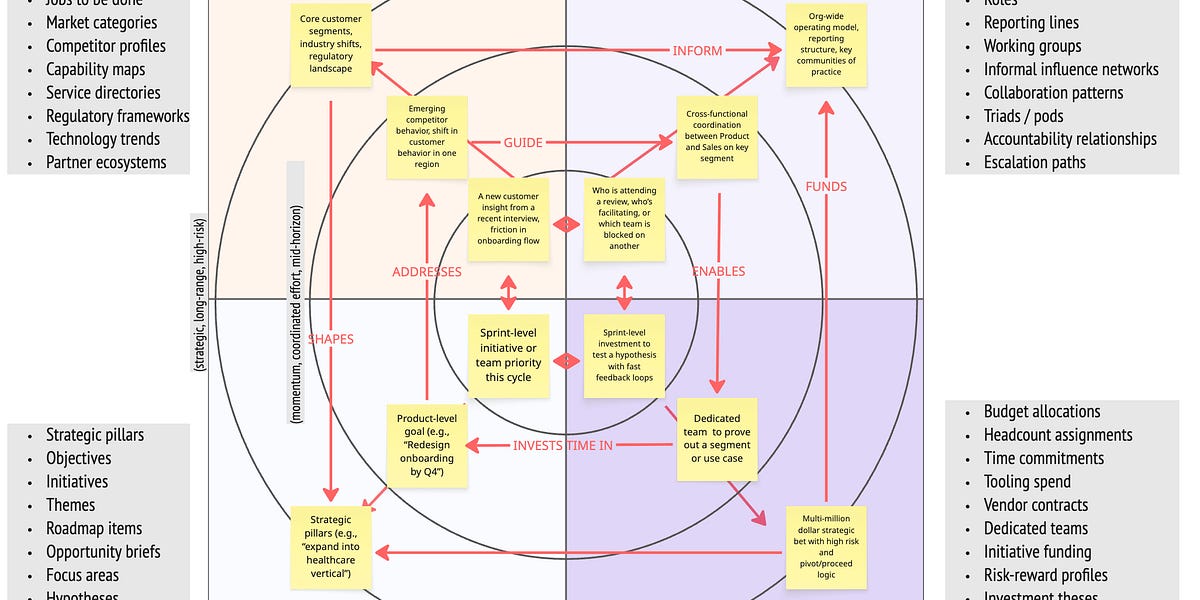The Beautiful Mess
1M
326

Image Credit: The Beautiful Mess
TBM 361: Context, Collaboration, Intent, and Investment
- The framework of Context, Intent, Collaboration, and Investment helps in distinguishing various entities and signifiers in an organization's operating system.
- Context encompasses perspectives on the current state, such as jobs-to-be-done maps, customer insights, and service directories, which can change rapidly.
- Intent focuses on future aspirations, ranging from broad visions to specific goals, which have a time component tied to them.
- Collaboration pertains to human interactions within structures, while Investment involves models governing how resources are allocated to achieve desired outcomes.
- A quick example illustrates how these elements can be applied, from improving customer satisfaction to coordinating teams for workflow enhancements.
- Layering a time or rate-of-change component on these categories can help organizations better prioritize and balance their activities.
- Establishing foundational models and frameworks, like North Star Metrics, capability trees, and customer journeys, can provide lasting value amid rapid organizational changes.
- Companies often fail to connect the dots between context, intent, investment, and collaboration, leading to inefficiencies and duplicated efforts.
- Key questions to consider include reevaluating where to invest time in foundational models, common funding approaches, communication of strategic intent, and reinforcement of contextual understanding.
- It is essential to find a balance between near-term goals and long-term aspirations while continuously reinforcing core models and frameworks within the organization.
- By addressing these aspects, teams can enhance their strategic alignment, operational efficiency, and ability to adapt to changing circumstances.
Read Full Article
17 Likes
For uninterrupted reading, download the app